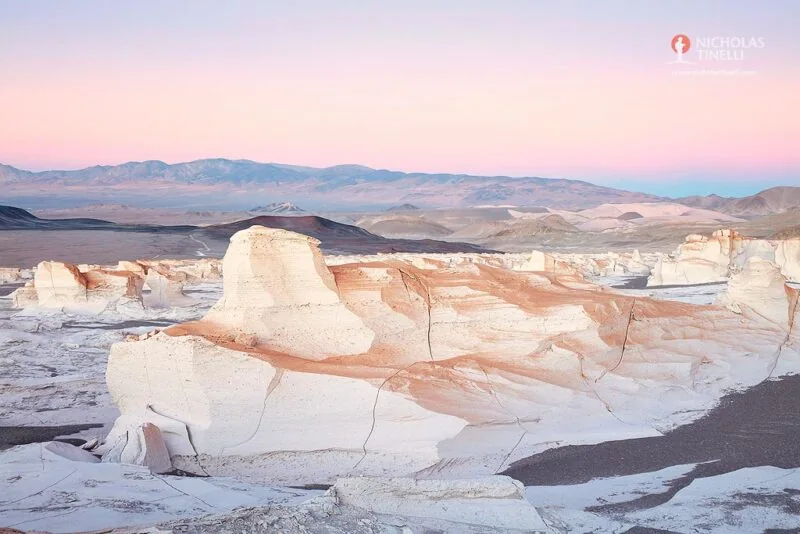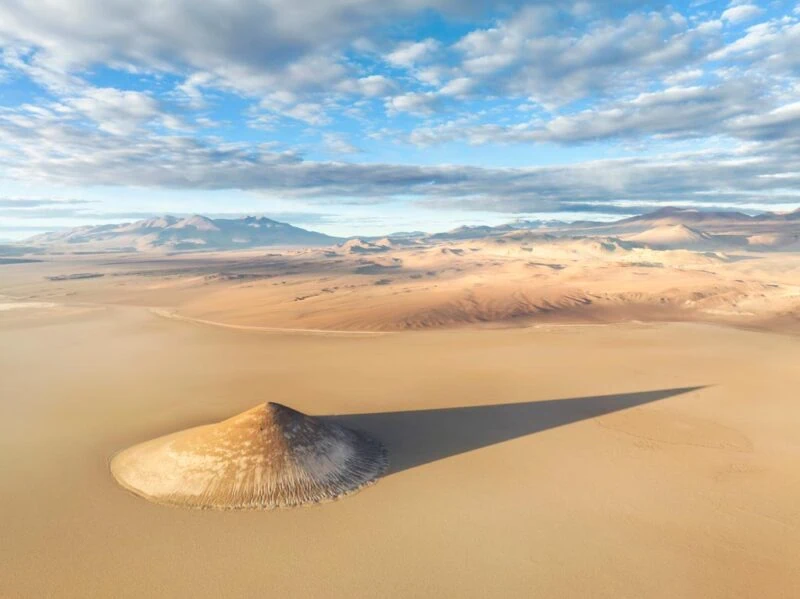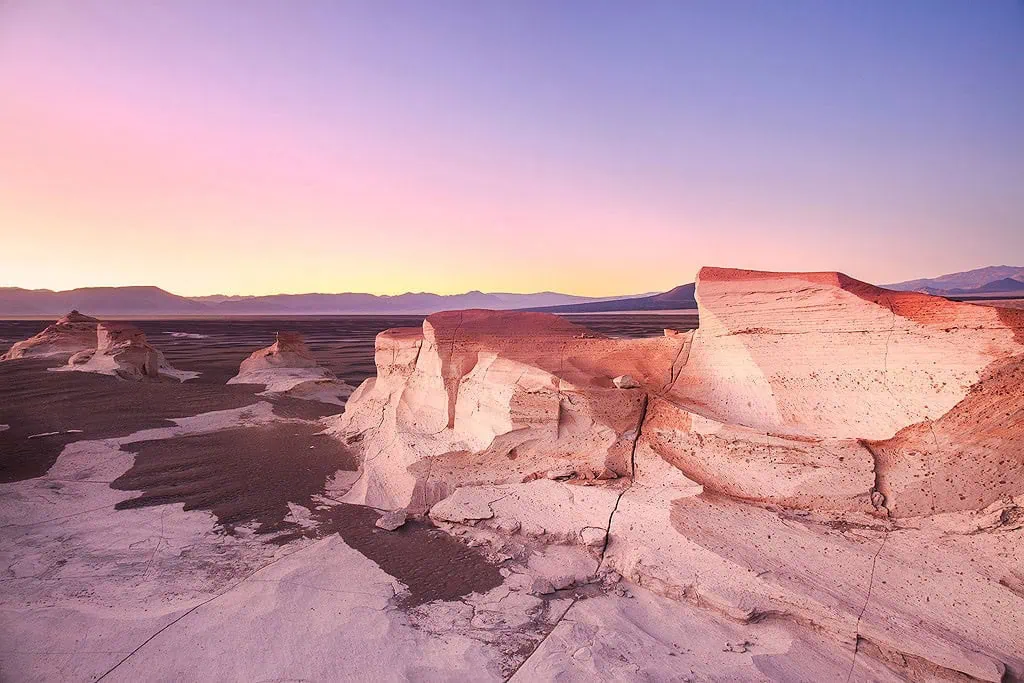
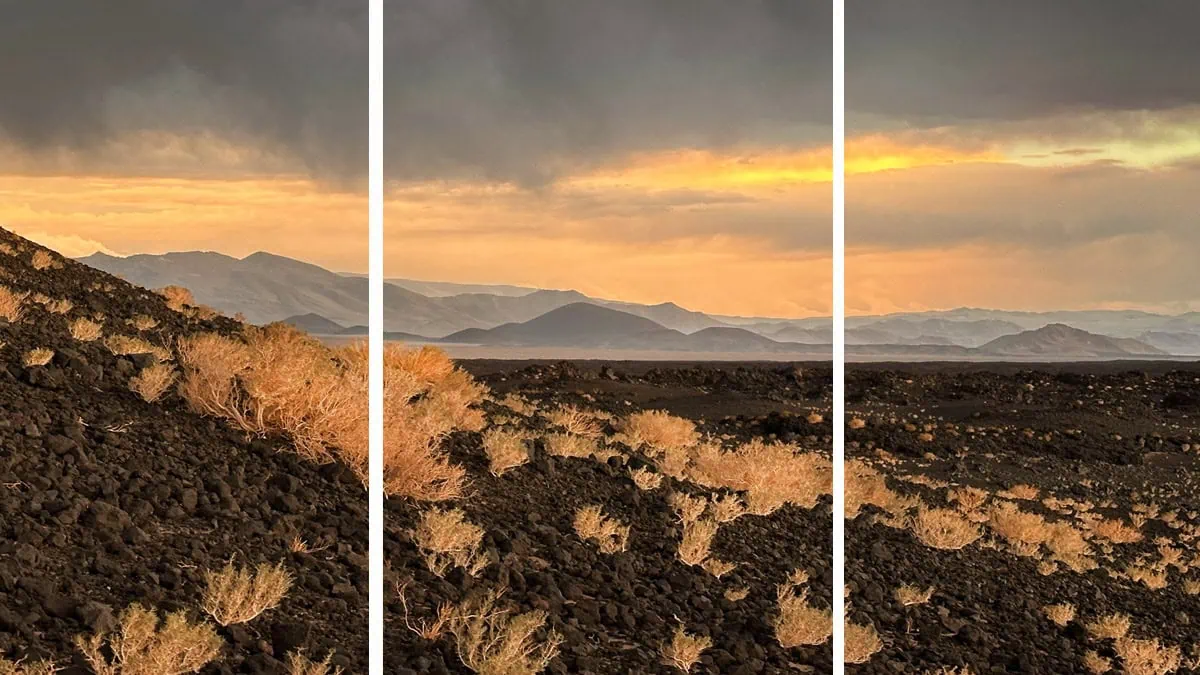
PUNA EXPERIENCE: CATAMARCA
4x4 Off-Road Expedition
NEXT GROUP DATE:
3 to 10 October 2026
- INFO
- ITINERARY
- PRICE / INCLUDED
- GALLERY
- BOOKING CONDITIONS
The Best of the Catamarca's Puna on a Photography Tour
-
GENRE
Landscape, Wildlife
-
BEST TRAVEL PERIOD
October to December / March to May
-
DIFFICULTY
Moderate (No trekkings, high altitude)
-
GROUP
Max 8
-
GENRE
Landscape, Wildlife
-
BEST TRAVEL PERIOD
October to December / March to May
-
DIFFICULTY
Moderate (No trekkings, high altitude)
-
GROUP
Max 8
Set out on an extraordinary Photography Tour through the Puna of Catamarca, Atacama region, Argentina. Towering volcanoes, ethereal rock formations, and vast high-altitude deserts create a dreamscape unlike any other, offering endless inspiration for photographers of all levels.
During this journey, we will explore some of the most iconic and otherworldly locations in the region: the Pumice Stone Field, Laguna Grande, Antofalla, Fiambalá, the panoramic Pissis Balcony, and the Ruta de los Seis Miles. Along the way, you’ll traverse rugged terrain, discover pristine salt flats and lagoons, and end each day with stunning sunsets that set the sky ablaze in shades of orange and gold.
Beyond the landscapes, you’ll have the chance to immerse yourself in the local culture, meeting the welcoming communities that call this harsh yet beautiful environment home. As you refine your photography skills, whether you’re a seasoned pro or an eager beginner, this 4×4 adventure will ignite your creativity and leave you with extraordinary images and memories.
Pumice Stone Field
Antofalla
Balcón del Pissis
Wildlife
PUNA TOUR ITINERARY
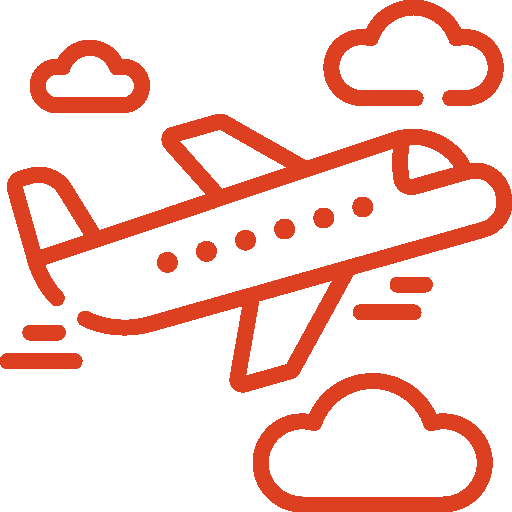
To book flights, please contact us before, we will help you coordinate schedules and transportation to get there. The nearest city for the arrival is San Fernando del Valle de Catamarca.
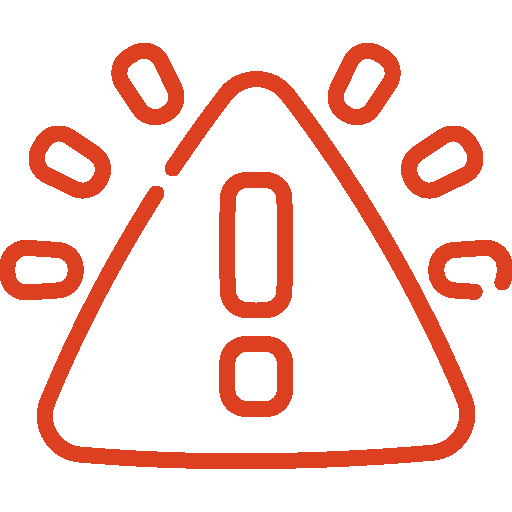
Transportation to San Fernando del Valle de Catamarca is not included in the trip, and we will not be responsible for any delays or disruptions that are beyond our control. In any case, we will do what we can, given the circumstances, to help you.
We’ll pick you up early in the morning at either the San Fernando del Valle de Catamarca airport or your hotel.
From there, we’ll begin our journey toward Fiambalá, with a stop at the Mayorazgo de Anillaco — a notable historical site along the Ruta del Adobe.
Visit at Finca Don Diego. Generally open for tasting visits from 4:30 pm to 8:30 pm.
Overnight stay in Fiambalá.
After breakfast, we will leave on the Ruta de los Seis Miles (Route of the Six Thousands).
A scenic route in the Andes Mountains, which crosses an area where there are more than 15 peaks over 6,000 meters high. The main route is a section of the National Route 60, which starts in Fiambalá and reaches the San Francisco Pass (4.726 masn).
Once we arrive at San Francisco Pass we will start the return trip to Fiambalá where we will spend the night.
From Fiambalá we will move to the Balcón del Monte Pissis, to experience one of the most stunning views of the Andes.
The first wonder along the route is Laguna Celeste, striking for the vivid intensity of its color. From there, a climb further up the mountain leads to the main viewpoint — and the most awe-inspiring scene of all. Words fall short in describing such perfection.
At 4,550 meters above sea level, the panoramic view includes Laguna Negra, a group of dazzling white salt flats, and, in the distance, the emerald-green Laguna Verde. The landscape is crowned by a portion of the famous Seismiles — towering peaks over 6,000 meters high — including Tres Cruces, Monte Pissis, and Cerro Olmedo.
Overnight in Fiambalá.
Sunrise photography at the Saujil Dunes. From Fiambalá, we’ll set off on a long and scenic journey, covering many kilometers as we make our way into the area of Antofagasta de la Sierra.
We’ll arrive in time to witness the sunset and twilight over the surreal landscape of the Pumice Stone Field — a truly unforgettable experience.
Overnight stay in El Peñón.
We’ll depart very early in the morning to photograph the sunrise at Laguna Grande, near the impressive Galán Volcano.
Afterward, we’ll return to El Peñón for lunch. Free time to rest after lunch. Sunset and twilight session at the extraordinary Pumice Stone Field.
Overnight stay in El Peñón.
After breakfast, we’ll begin our journey to Quebrada de Calalaste, continuing onward to Antofalla, a small village perched on the northern edge of the salt flat that shares its name.
There, we’ll pause for lunch and a well-deserved break.
In the afternoon, we’ll set out toward Laguna Verde or Ojos del Campo. Please note that access to these areas is managed by the Kolla Atacameña community of Antofalla, and our visit will depend on their authorization.
Sunset on the way back.
Overnight stay in El Peñón.
On our final day of travel, we will embark on a long journey through familiar yet equally breathtaking landscapes. Along the way, we hope to capture some locations, such as the Quebrada de las Conchas.
Photographic stops will depend on various factors, as we have a long drive ahead back to the city of Salta.
Night in Salta.
After breakfast, we bid farewell—until the next adventure!
IMPORTANT
The itinerary published on this page and on our PDFs/brochures is indicative. The guide reserves the right to make changes without prior notice, which may depend on various factors/events such as weather, geography, protests, medical emergencies, etc.
Changes are aimed at ensuring the safety of travelers and the success of the trip, always trying to maintain the proposed activities.
Due to the altitude in the Atacama Puna (in Argentina the average elevation is 3500 MASN) there is a lower diffusion of oxygen.
Price (based on 6 participants):
2.450 USD (Double Occupancy)
Single Supplement available for 250 USD extra.
The difference between single and double rooms only applies to accommodation in Salta and Fiambalá. In other lodgings of the puna, we sleep in single or double rooms (depending on availability).
What's included?
- Local Driver Guide & Photographer
- 4x4 Transportation, Fuel
- Small Group Size
- Analysis of the Work Done
- Accommodation for 7 Nights
- All Excursions and Photography Activities
- All Breakfasts
- Airport / Hotel Pick-Up and Drop-Off
What's not!
- Transport from your origin point to Catamarca
- Other meals (only breakfasts included)
- Entrances to the Pumice Stone Field
- Travel & Medical Insurance (optional, but recommended)
- Personal Expenses
- Tips
Bookings
To book a workshop we ask for 30% deposit of the total.
The workshop balance must be paid 45 days before the start date. You can also pay in cash (USD or euros) upon arrival.
Cancellations & Refunds
For a workshop cancellation, a written notice is required. Please email your request to info@argentinaphotoworkshops.com.
We acknowledge the commitment involved in attending our workshops and strive to accommodate unforeseen circumstances.
Please review our Cancellation Policy below:
• Cancellation made more than 181 days before the workshop start date: 20% refund of any payments made.
• Cancellation made less than 180 days before the workshop start date: No refund of any payments made.
Please note the following:
• In the event that you are unable to attend, your paid balance will be credited for 1 year (from the date of the cancelled trip) as part of the payment of a workshop of your choice.
If the amount was paid in Argentine pesos, the equivalent in US dollars will be credited subject to the exchange rate on the day the trip was cancelled.
In case the workshop is cancelled by Argentina Photo Workshops due to reasons of force majeure:
• There will be a complete refund of the amount deposited.

5% EARLY BIRD DISCOUNT
Applies for bookings made more than 8 months in advance of the start date.
RECOMMENDED EQUIPMENT
Check out our guide on “How to Prepare for a Photography Workshop”, as well as information on equipment and FAQs below.
Near the date of the workshop, we will be in touch through a WhatsApp group, an ideal space to answer all kinds of questions before the trip and organize every detail. If necessary (upon request) we will also arrange a group video call via Google Meet for this purpose.
Although you can participate with any type of photographic device, we recommend a reflex or mirrorless camera, which allow much more freedom and creativity.
Considering the wide variety of photographic situations this workshop presents, it is advisable to have available focal lengths ranging from wide-angle (shorter distances) to telephoto (longer distances).
For Landscape Photography, we suggest a wide focal lenght: ideally around 15 – 50 mm. You can also get a good landscape with a longer focal length by using a stable tripod.
For night photos (Astrophotography) the shorter the focal length, the better. This makes it possible to include more elements in the frame.
For terrestrial wildlife, a 300mm or longer telephoto lens is the best choice.
Consider also buying a tele converter to increase the focal length of the lens: 1.4x or 2x. Even if with loss of luminosity.
Finally, choosing the right set of lenses is not easy. If you encounter difficulties and need some suggestions do not hesitate to contact us.
Many of the areas we visit are remote, and it is possible to fly the drone, always maintaining proper precautions and at a distance from agglomerations of people, airports, and helicopter landing strips.
The most important feature of a tripod is its stability. Since every journey includes some trekking, we must also take into account the weight.
We suggest a good carbon tripod that maintains a good balance between weight and stability, that can easily change from one height to another and that locks in little space.
Aluminum is also fine, as carbon is generally much more expensive. We know that choosing a tripod is not easy and we are available to help you choose the right model for you.
A Polarizing filter will be very useful to neutralize water reflections in the lagoons.
For those who love Landscape Photography, ND filters with 6 or 8 steps will be also very useful to play with the movement of water and clouds.
It is recommended to carry UV or Skylight filters, useful to protect the lenses from Ultraviolet rays (even more important in these altitudes), dust and splashes.
Finding the right photo backpack can be a difficult challenge. We recommend you to rely on a brand with quality and experience in the market.
The type of backpack clearly depends on your equipment. But what really matters is that you feel comfortable with it and possibly fitted with a rain cover.
You can’t miss in your backpack: a cleaning kit for the lenses, a remote control to shoot without touching the camera, hood for the lenses (to avoid flare) and a robust / comfortable camera strap.
It is also important to take spare batteries and memory cards with you.
FREQUENTLY ASKED QUESTIONS
Of course, accompanying non-photographers are welcome. The price is the same.
Usually in a Photo Tour the Leading Photographers accompany to locations only, while in a Workshop you are also expected to receive technical notions to improve your photography. Both options, often confusing, are good. It depends on what one is looking for. Our activities are developed in both modes, depending on the trip.
The most characteristic fauna includes vicuñas.
Most common species of birds are the Suri (Small Rhea), and the flamingo.
There is also a great diversity of lizards.
We recommend wearing heavy clothing and a waterproof or windbreaker jacket.
Hat, neck cover, gloves and sunglasses.
Sturdy, comfortable footwear (hiking type) for walking.
Comfortable and robust backpack to carry your gear and protect it from dust, water and bumps.
Sunscreen.
The round trip between your city of origin and San Fernando del Valle de Catamarca / Salta is not included in the price.
However, we can coordinate it.
In general, you can travel from March to December.
The best months are March to May and October to December.
During June, July and August the weather is very cold. While August and September are usually very windy months.
These activities require a lot of organization and are prepared well in advance. Weather is a factor we can’t predict, so the workshop/photo tour is not cancelled.
In any case, we will always be attentive to weather conditions to optimize the program and try to provide the best light conditions for photography.
Get more information about the Photo Tour, such as the cost of the next group workshop or a quote for a private adventure, just for you / your group.
GET MORE INFO
Join this Adventure!
RELATED ARTICLES
Travel Guide to the Puna of Catamarca & Pumice Stone Field
Perched at altitudes often exceeding 3,500 meters above sea level,...
Read MoreTolar Grande: Guide to the Puna of Salta and Arita Cone
Tolar Grande is a small mining town at 3,500 meters...
Read More
